The Forever Epicenter
Traumas compound as New York marks 20th year since 9/11 amid second year of COVID-19
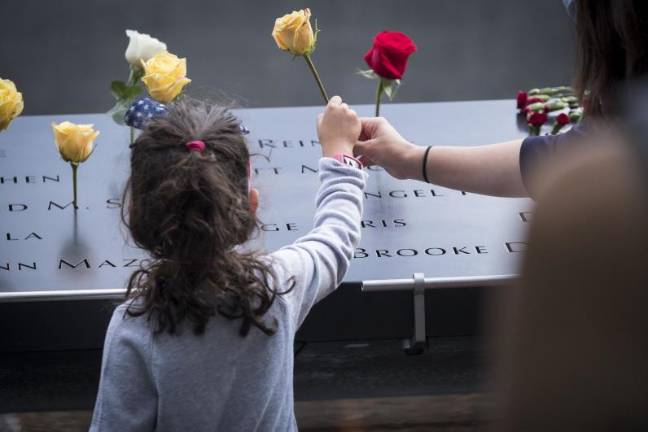
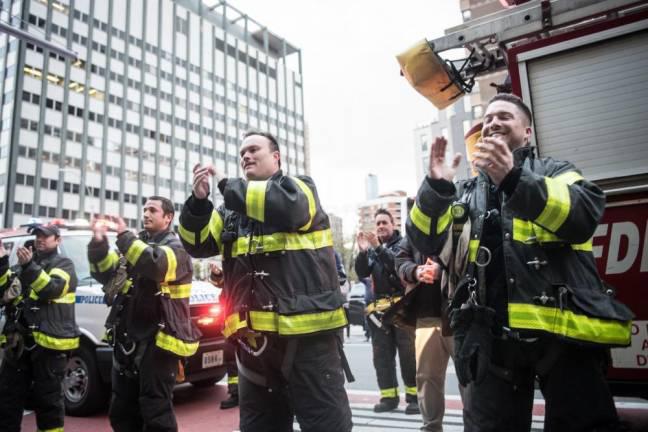
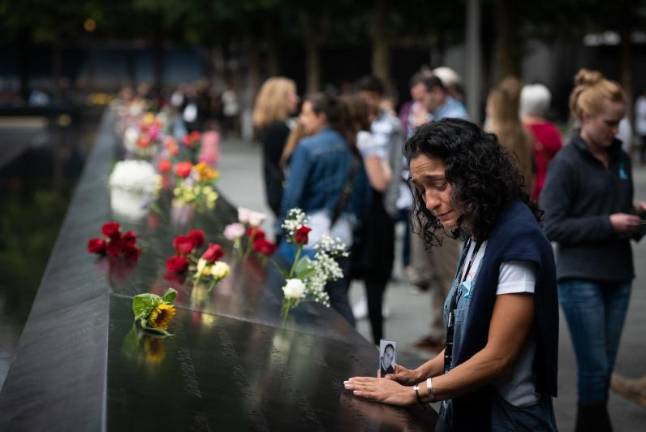
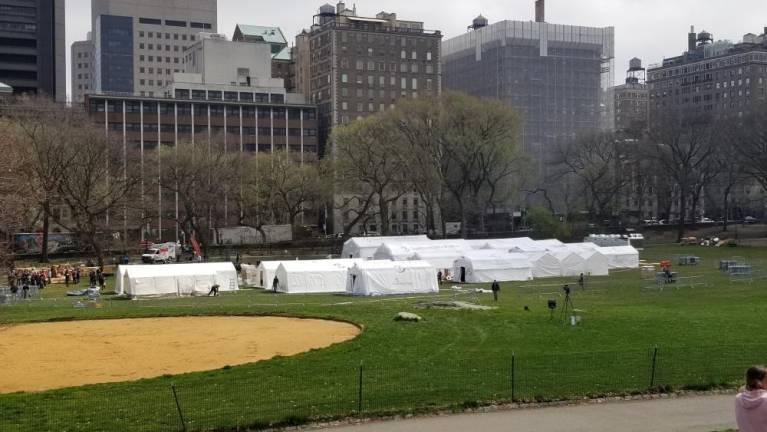
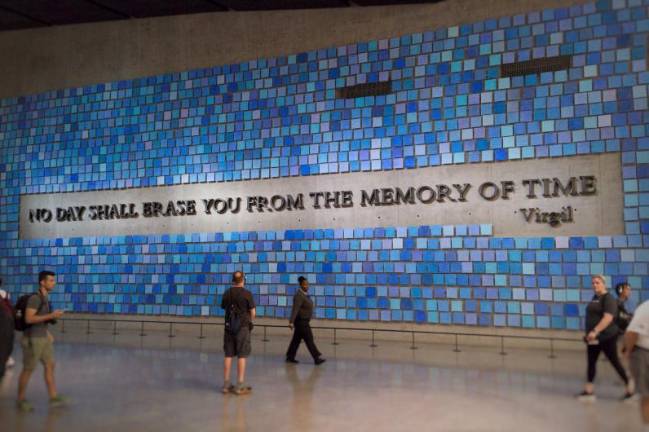
History constantly recalibrates our threshold of the unfathomable. What we thought was unbearable turns out to have been preparation for worse. The twentieth anniversary of the assault of 9/11 arrives as we suffer through the second year of the pandemic of Covid-19.
The carnage of September 11, 2001, was three times the Great City’s worst previous disaster, the loss of the side-wheeler General Slocum in the East River in June of 1904 with 1,021 souls, mostly working class women and children.
The toll of fellow New Yorkers lost to Covid-19 is, so far, ten times the losses on 9/11.
New York has held an unwelcome place of prominence in both of these global events and was transformed by them. In each case the initial shock, in which we feared this was the apocalyptic end of New York’s run as a capital of the world, has been replaced by a belief – or is it a promise? – that we learned the lessons and will be stronger and do better next time.
As with all history, we cannot help but see the more distant event through the pain of the more recent. At the time, we thought nothing so bad as the sudden demolition of the twin towers had ever happened or could ever happen again, a notion that even then raised eyebrows among friends and allies in places where terrorism and violence were more familiar parts of their history.
Back in Soviet days an apocryphal Russian claimed he wasn’t worried about the future. What bothered him was the way the past kept changing.
Our past can’t help but look different through the tortured lens of our present. From the smoldering embers, endless sirens, missing protective equipment and shared sense of horror beyond our control, patterns emerge of mistakes we should stop making.
The post 9/11 unity that took us into the forever war looks shallow as that war ends in chaos. Yet, overcoming disunity and inequity revealed by Covid-19 is now our opportunity to save ourselves by saving others.
A million New Yorkers have been born since September 11, 2001. For them, and for all of us, now is a time to remember a shock we said we would never forget and understand it in the present tense.
“ARE THE KIDS OK?”
History has deepened our thoughts about 9/11. But for many of us it has done little to salve our feelings of that day. I watched the buildings collapse on television screens in my midtown office, knowing my wife Geraldine, a reporter, was down there. I knew because I had watched her enter the subway at Times Square.
We had dropped our kids off at school and were planning to have an easy breakfast in the calm of that primary election day. But the radio reported a small plane had hit the Trade Center. So much for our breakfast. By the time we drove to Times Square, the scale of the tragedy was becoming clearer.
“Look,” I said, pointing at all the jumbo screens as I handed her all the cash in my pocket and a bound notebook that became her record of the day. As we watched, the second plane slashed into tower two. No accident, I said to her, it’s an attack.
That was the moment everything changed.
For hours I heard nothing from her from downtown. Finally, at midday she called from a pay phone blocks from ground zero (the cell tower went down with the Trade Center). I will never, ever forget her first words over that phone line: “Are the kids ok?” I assured her they were. Our nanny had collected them from school, arriving even before my mother and before I had been able to reach either of them.
It was many hours more before Geraldine and I were reunited, on a dark and empty 43rd Street around midnight. She was a ghostly figure, draped in that white dust that permeated everything in those first few days. When she got home our son screamed. “Mommy, your hair is white!” Among the many memories, one of the hardest to purge is “the whiff,” as she puts it, of that dust and all we know it contained.
The only important thing about our personal story is how unimportant it was in a city where the families of 2,750 others lost so much more that day. Yet we still each carry our own experience as Geraldine carried that notebook through the day. Every New Yorker who was here can still remember where they were just after 8:46 that September morning and how their day, and their life, unfolded from there.
The final toll of 9/11 is not known yet. Rescue and recovery workers on “the pile” of rubble were told they did not need face masks. The air, the government said, was safe to breath. It turned out to be laden with toxic material that lead to cancers, lung and heart disease.
These were also, of course, leading “comorbidities” of Covid-19. 9/11 first responders say the pandemic, with its arguments about masks and its endless emergency calls in the night, has triggered many traumatic memories. Dozens, at least, have died of Covid-19.
The notebook Geraldine carried that day is still in her top desk drawer.
THE CITY IS LIKE THE SEA
The terrorist attack and the pandemic are obviously different in many ways. Yet, many New Yorkers are experiencing them as some version of a forever narrative of life and death, struggle and survival.
“I don’t like to use the word anniversary,” one of the premier tellers of New York’s story, Spike Lee, explained to the New York Times. “But with 20 years coming up since 9/11 and with people often saying of New York during Covid, ‘this is the epicenter,’ it was natural.”
Lee was trying to put into words why he had meshed the two events in his new documentary, “NYC Epicenters: 9/11-2021½.” In the end, the connection Lee was trying to describe seems as much a feeling as any set of facts. The collective grief that has become a repetitive, and apparently unavoidable, part of being a New Yorker. History never repeats, it is said, but it often rhymes.
“I think that we’re honoring the people who lost lives with 9/11 related illnesses,” Lee explained. “And also the more than 600,000 Americans who are no longer here because of Covid. More Americans have died of Covid-19 than Americans have died in World War II, The Korean War, Vietnam, Iraq and ironically, Afghanistan, combined.”
One in 20 of the Covid dead in the United States are New Yorkers.
A decade ago, I wrote on the tenth anniversary of 9/11 that great cities are like the sea. They swallow their dead. Which is why most New Yorkers have no idea where to find the memorial for the dead of the General Slocum (it is in Thompkins Square Park). We move on.
The point was that 9/11 seemed different. It still does. We have devoted to its permanent memory one of the things the city holds as dear as the human heart, prime real estate.
Our sense of loss was encapsulated by the “Empty Sky” Bruce Springsteen sang of. We used the footprint of those missing towers as our monument to the departed.
The 9/11 memorial and museum became one of the city’s most visited locations -- until Covid-19 shut out visitors. How could we have foreseen that a tragedy of such towering scale could be dwarfed so soon after?
OUT OF THE BLUE?
Collective grief is just part of the connection between 9/11 and Covid-19. Another, the most unsettling, is the shared myth that these events hit us unaware.
The New York Times even used “Out of the Blue” as title of a book narrating the 9/11 attack, evoking both the crisp weather that September day and the overwhelming sense of having been taken by surprise.
Mayor Bill de Blasio sought to evoke a similar feeling when he said the other day of Covid-19: “There’s no way to fully understand a global pandemic until you’re in it and none of us anticipated anything like this.”
But in each case the claim that we did not know of the threat is false – a dangerous denial of reality. Perhaps this is a form of survivor’s guilt. Or maybe it’s more prosaic, a political blame shedding.
“We needed federal leadership that wasn’t there,” de Blasio said. To be sure, Donald Trump failed to protect the country. But so did others. Blaming only Trump obscures the larger inability, apparent in the prelude to 9/11 and Covid-19, to perceive and react to clearly present danger.
In each case, the warnings were detailed and alarming. We were the beachcomber who refused to evacuate in the face of a category five storm.
Before 9/11, the rising threat from Al Qaeda was well recognized. The New York Times itself had run a series of articles on Osama Bin Laden earlier that year (I helped edit them). A US warship and two embassies had been attacked. So, too, had The World Trade Center, by a truck bomb that came closer than most people understood to toppling the structure in 1993.
“But on that September day we were unprepared,” said Thomas Kean and Lee Hamilton, co-chairs of the National Commission that studied the 9/11 attacks. “We did not grasp the magnitude of a threat that had been gathering over time.... This was a failure of policy, management, capability, and – above all – a failure of imagination.”
A failure, in other words, to put the pieces together so we could see and respond to what was right before us. “No one had ever believed this kind of thing could happen,” New Yorker Thomas Dyja wrote of the 2001 attack on the Trade Center, “though it had eight years before.”
The same thing happened again with Covid-19. The public warnings were even clearer, from Steven Soderberg’s 2011 film, Contagion, to Bill Gates’ 2015 Ted Talk. In 2006, the city’s health department began drafting a plan for managing a pandemic in New York. It was never completed.
“On January 9, 2020, New York City officials received an alert from the Centers for Disease Control and Prevention that warned of a novel coronavirus that was rapidly spreading in China,” Scott Stringer, the city comptroller, wrote in a report detailing “the failure of the City to better prepare and plan for a pandemic.”
It took two months from that January warning for the mayor to act, to close schools and take other steps to contain spread of the virus, by which point, it was too late.
“When COVID-19 hit, the City was caught without a complete citywide operational plan for responding to a pandemic,” Stringer wrote, “without essential resources critical to the City’s response efforts, and without the organizational structures and management systems needed to effectively respond to COVID-19.”
The question screaming at us from both 9/11 and Covid-19 is not why we weren’t warned, but why couldn’t we process the warnings? Why couldn’t we respond adequately to known risk before disaster?
Andrew Cuomo, at one of his many Covid-19 briefings during the crisis, seemed to recognize this question when he demanded to know why the New York Times and other media had not done more in early 2020 to sound the alarm about the gathering threat of the coronavirus. This would have made it easier for public officials to mobilize the actions needed, Cuomo said.
Filmmaker Nanfu Wang, in her new documentary, “In the Same Breath,” says that in early 2020 she became increasingly alarmed about the spread of disease in Wuhan. Her family lived nearby. She archived social media posts to break through the Chinese information lockdown.
“I tried reaching out to a few major newspapers in the US with the hope that news coverage could somehow help these people,” she reports, showing e-mails addressed to The Times and the Washington Post. “None of the newspapers I contacted would pursue the story.”
Unable to interest American media, she began hiring videographers in Wuhan. Their video of a stricken city is horribly familiar, resembling both sections in Soderberg’s movie and video three months later in New York City.
We know now that one of the nation’s best known journalists, Bob Woodward, talked with Donald Trump about the danger of the coronavirus at a time when Trump was publicly saying it was no big deal. The two men left that discussion and did, well, nothing.
But before we blame everyone else, it is useful to ask what each of us knew as citizens, when we knew it and what we did with what we knew.
THINK GLOBAL, ACT LOCAL
On March 1, 2020, the first case of Covid-19 in New York City was reported. The New York Times and New York Post accompanied reports that the virus had arrived, apparently from Iran, with photographs of Asian New Yorkers in Queens, for which they were quickly castigated.
“New York Times and New York Post Use Images of Flushing for Manhattan Coronavirus Case,” the Flushing Post headlined its report.
The photographs were taken down, which was correct in one sense but may have missed a much bigger point. The man and two women in the photographs were wearing masks.
In other words, a full two weeks before the city and state imposed any public health restrictions, some of our neighbors already understood the threat and were acting to protect themselves and their community.
To this day, the lowest rates of coronavirus in the city, by demographics, is among Asian New Yorkers. We were so concerned about insulting Asian New Yorkers that we did not seem able to listen to what they already understood.
New York’s diversity has not always been a source of peace, but it has always been a source of strength. If we know how to be open to it.
Virtually since its invention by the Dutch, New York, nee New Amsterdam, has been a global city, dependent on that open door for its success. Indeed, our place as a capital and the seat of the “western world order” was precisely what made us a target on 9/11. The twin towers were, after all, called the World Trade Center.
Global trade and travel brought us the pandemic, too. New York is not New Zealand. There is no way to close the city off from the world without altering its essence. Its strength and its vulnerability are one reality.
Yet, even here we failed to see the situation fully. While officials were watching Asia, the variant of the virus that brought us low entered New York from Europe.
The destruction of the World Trade Center disrupted the city’s growth but did not end it. Tourism and migration briefly froze. But the global economic forces that raised up New York were more powerful than the ones that had sought to tear it down. By 2020, the city’s population and economy were larger than ever before.
The waves of migration resumed and the newcomers crowded into housing that made them vulnerable to disease, just as they had a century before when Jacob Riis had chronicled unacceptable conditions.
New York’s recovery after 9/11 is a source of encouragement now. But whether we do recover has a lot to do with how we understand and adapt.
COME BACK CITY
Our failure to heed warnings, before both 9/11 and the pandemic, is the cautionary tale that we ignore at our continuing peril. After the attack, the 9/11 commission and many others warned there would be further attacks unless we tightened our security.
In 2002, the new police commissioner, Ray Kelly, created a local intelligence and counter terrorism capacity within the NYPD so the city could play a bigger role in protecting itself.
Scott Stringer’s report last week raised much the same point about the global public health issue: “As the cost of the pandemic in lives lost and economic hardship to the City, its residents, and its businesses is calculated, it is critical that the City ensure that it is better prepared to respond quickly, completely, and effectively to the next emergency.”
It has become conventional wisdom to observe that 9/11 brought us together and Coronavirus drove us apart. But our unified response to 9/11 ultimately created the “forever war” that drove us apart.
The bungled mission in Afghanistan is particularly palpable on this anniversary. We tried to eradicate the virus of terrorism, rather than contain and isolate it.
That lesson seems relevant as we enter a new phase of the pandemic in which we recognize Covid-19 as “the forever virus,” a headline Foreign Affairs Magazine no doubt used for its resonance with the instructive narrative of 9/11.
“Sars-CoV-2 cannot be eradicated,” explained the lead author, Larry Brilliant, the famed epidemiologist who helped eradicate smallpox. In other words, we need to learn to live with the virus. But that is an opportunity. Our success will depend on strategy and cooperation, Brilliant writes.
In other words, to live with the virus our mayor, our new governor, our public health officials from Manhattan to Geneva, to say nothing of the rest of us, must learn to live with each other more cooperatively – perhaps the way we did after 9/11?
“From the devastation of Covid-19 the world must work together to build an enduring system for mitigating this pandemic and preventing the next one,” Brilliant concludes, “Figuring out how to do that might be the most meaningful challenge of our lifetime.”
The epicenter of that work is, obviously, New York City.
“I don’t like to use the word anniversary. But with 20 years coming up since 9/11 and with people often saying of New York during Covid, ‘this is the epicenter,’ it was natural,” Spike Lee.